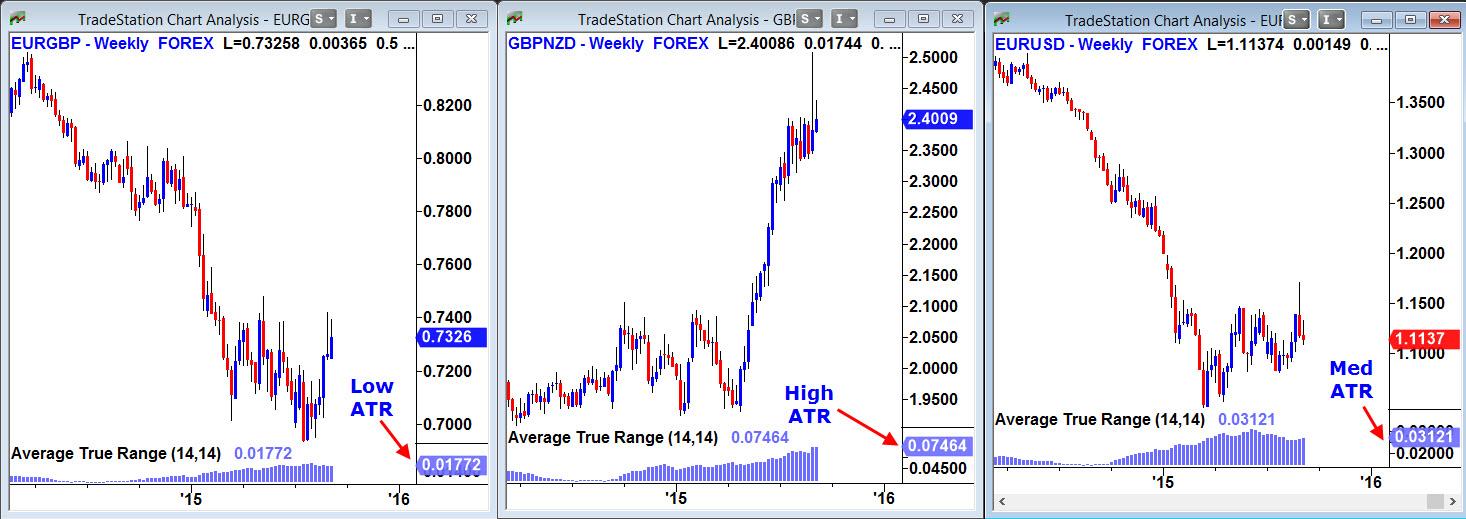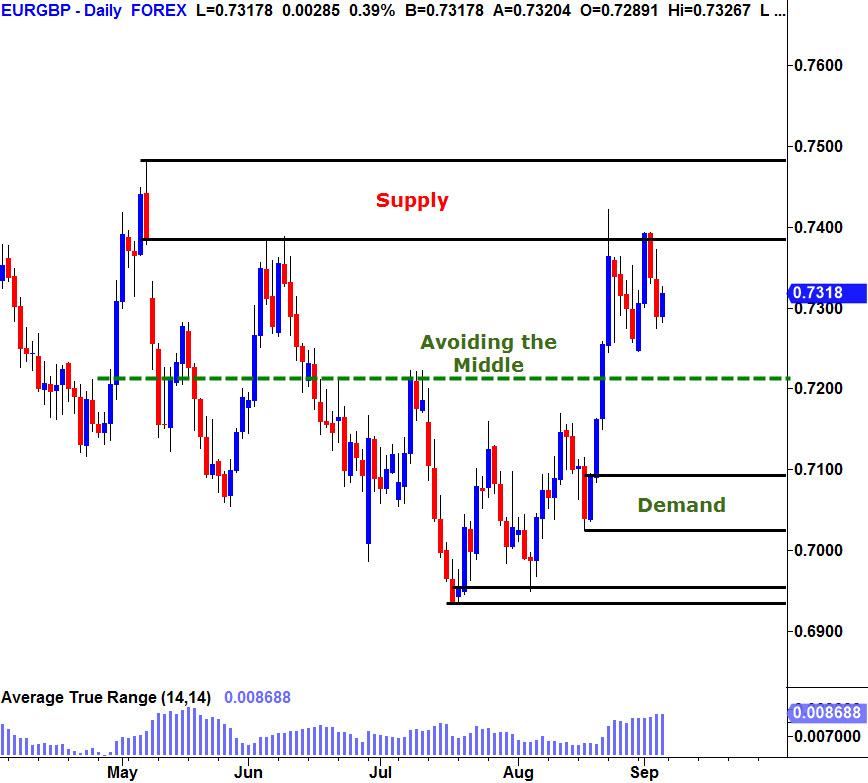![]()
Many thanks for joining me for the third and final part of this series of articles dealing with the finer aspects of forex risk management. So far we have explored the impact of risk to reward ratios and we looked into the subtleties surrounding the duration of our trades and when to pull out of a position for safety’s sake. Now, it’s time to delve into the last two areas of interest.
Remember, when it comes to trading FX like a professional you need to be aware that there are more aspects which can affect the outcome of the trade beyond simply using a stop loss order. Of course, I would always say that the stop loss is, without question, the most important thing to put in place; but if you truly want to sharpen your edge for success in your trades there are other things to be taken into account as well. The specific areas I wish to touch upon now are namely how to screen pairs to trade and then to take a look at how frequently we enter the market itself. Let’s get right into it:
Screening
When I talk about the topic of screening, I am concerned with finding markets that are adequate to trade and that offer me a quality level of volatility and liquidity. Any currency pair that I trade needs to be liquid enough (have enough willing buyers and sellers at any given price) and must also move enough for me to achieve a decent profit if I am indeed right on the trade. If a market is too quiet it will be tough to ever get a solid risk to reward ratio on my positions. If the currency pair is too volatile I am likely to be stopped out more often than not. Ideally, I need to find a decent enough balance between the two and work within these set parameters.
One of the most effective ways I have found to screen for pairs to trade is by using the ATR or Average True Range, an indicator which measures the size of the average day’s trading range over the last 14 trading days or, if on less than a daily chart, the last 14 periods. This tool gives me an idea of what to expect movement-wise in my trades and allows me to adhere to my forex risk management rules more objectively. Let’s look a selection of markets with the ATR applied:
In the above example, we can see three FX pairs each with varying ATR readings. Because I have applied the tool to the weekly charts, we would read the numbers as the expected pip movement in any given week. As we can see, the GBPNZD is highly volatile and moves around 750 pips a week compared to the gentler and almost dormant EURGBP at 177 pips per week. The former would probably not be ideal for less experienced traders while the EURGBP would offer far fewer trades and they would take longer. Both would be fine to trade but you would want to consider the middle ground with something like the EURUSD at 312 pips as the ideal market in these current conditions. Note that this type of screening is ideal in giving us an idea of what to expect of currency pairs. If we know what to expect, we can manage our trades and plan our actions more thoroughly. It also means that we can adapt to market conditions as ATR values change and only trade pairs which match our criteria, meaning we won’t always trade the same markets all of the time.
Frequency
When looking at trade frequency from a risk management perspective, we are concerned with how many trades we take. Simply put, the more trades you enter, the more potential risk you take as your exposure increases, hence giving you more room for losses as well as wins. It should also be noted that jumping into trades too often will also compromise your risk to reward ratios heavily. You see, we all should be aiming for at least 3:1 ratios for win to loss but we have to wait for the markets to reach levels where these kinds of outcomes are actually possible. If you trade in the middle of extremes it will inherently be harder to find such setups. This is why we focus on teaching our students to find only the most quality levels of Supply and Demand created by institutions, as these typically offer us the best rewards, the lowest risk and the highest probability. This is an important aspect of your forex risk management strategy. Take a look at the chart below:
In the above chart of the EURGBP, we can see that prices spend much of their time in the middle of nowhere, fluctuating with little conviction. This is where we can be easily chopped around in our trades. However, if we focus on only selling near qualified levels of Supply and buying near qualified levels of Demand, we can now find opportunities which offer us not only lower risk but also higher probability of success and greater rewards.
Sure, this means that we will be trading less often but I would always encourage my students to choose quality over quantity in any markets. Ask yourself a question: if these levels are where the biggest banks and institutions are trying to buy and sell, then they must be doing this for a reason right? Maybe because these levels where they are entering are giving them an opportunity to sell at retail prices and buy at wholesale prices, the kind of areas where you can rarely go wrong. Think and act like the institutions and you will be thinking and acting like a professional. I hope you have found this series helpful to your trading.
Note: All information on this page is subject to change. The use of this website constitutes acceptance of our user agreement. Please read our privacy policy and legal disclaimer. Opinions expressed at FXstreet.com are those of the individual authors and do not necessarily represent the opinion of FXstreet.com or its management. Risk Disclosure: Trading foreign exchange on margin carries a high level of risk, and may not be suitable for all investors. The high degree of leverage can work against you as well as for you. Before deciding to invest in foreign exchange you should carefully consider your investment objectives, level of experience, and risk appetite. The possibility exists that you could sustain a loss of some or all of your initial investment and therefore you should not invest money that you cannot afford to lose. You should be aware of all the risks associated with foreign exchange trading, and seek advice from an independent financial advisor if you have any doubts.
Editors’ Picks
EUR/USD edges lower toward 1.0700 post-US PCE

EUR/USD stays under modest bearish pressure but manages to hold above 1.0700 in the American session on Friday. The US Dollar (USD) gathers strength against its rivals after the stronger-than-forecast PCE inflation data, not allowing the pair to gain traction.
GBP/USD retreats to 1.2500 on renewed USD strength

GBP/USD lost its traction and turned negative on the day near 1.2500. Following the stronger-than-expected PCE inflation readings from the US, the USD stays resilient and makes it difficult for the pair to gather recovery momentum.
Gold struggles to hold above $2,350 following US inflation

Gold turned south and declined toward $2,340, erasing a large portion of its daily gains, as the USD benefited from PCE inflation data. The benchmark 10-year US yield, however, stays in negative territory and helps XAU/USD limit its losses.
Bitcoin Weekly Forecast: BTC’s next breakout could propel it to $80,000 Premium

Bitcoin’s recent price consolidation could be nearing its end as technical indicators and on-chain metrics suggest a potential upward breakout. However, this move would not be straightforward and could punish impatient investors.
Week ahead – Hawkish risk as Fed and NFP on tap, Eurozone data eyed too

Fed meets on Wednesday as US inflation stays elevated. Will Friday’s jobs report bring relief or more angst for the markets? Eurozone flash GDP and CPI numbers in focus for the Euro.
RECOMMENDED LESSONS
Making money in forex is easy if you know how the bankers trade!
Discover how to make money in forex is easy if you know how the bankers trade!
5 Forex News Events You Need To Know
In the fast moving world of currency markets, it is extremely important for new traders to know the list of important forex news...
Top 10 Chart Patterns Every Trader Should Know
Chart patterns are one of the most effective trading tools for a trader. They are pure price-action, and form on the basis of underlying buying and...
7 Ways to Avoid Forex Scams
The forex industry is recently seeing more and more scams. Here are 7 ways to avoid losing your money in such scams: Forex scams are becoming frequent. Michael Greenberg reports on luxurious expenses, including a submarine bought from the money taken from forex traders. Here’s another report of a forex fraud. So, how can we avoid falling in such forex scams?
What Are the 10 Fatal Mistakes Traders Make
Trading is exciting. Trading is hard. Trading is extremely hard. Some say that it takes more than 10,000 hours to master. Others believe that trading is the way to quick riches. They might be both wrong. What is important to know that no matter how experienced you are, mistakes will be part of the trading process.


